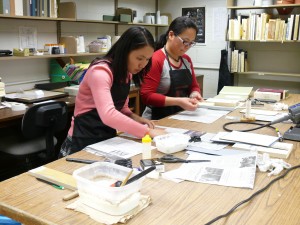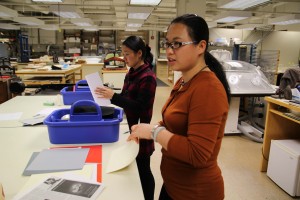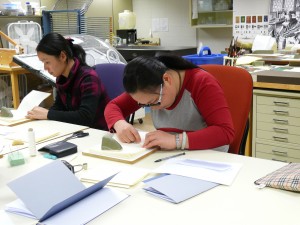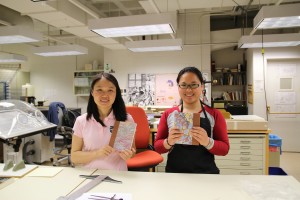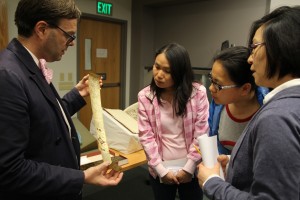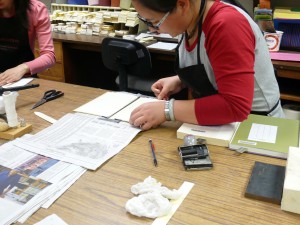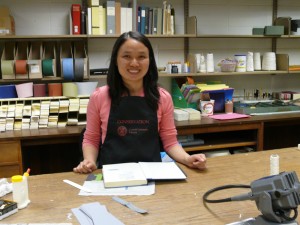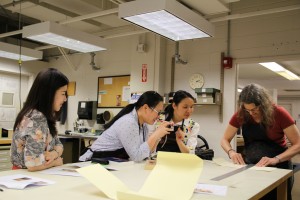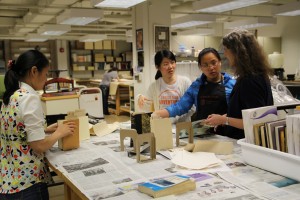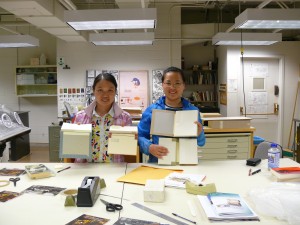by Michele Brown
The next phase of the Luce intern training program has begun. Chen Zhimei from Xiamen University and Zhang Chunmei from Fudan University recently finished four weeks of basic preservation training with our department.
The first grant provided training to librarians from 4 institutions in Beijing: the Chinese Agricultural Library, Renmin University, Peking University and Tsinghua University. The new grant targets the preservation needs of libraries in other areas of mainland China and Taiwan: Fudan University, Xiamen University, Shanghai Jiao Tong University, National Taiwan University, Nanjing Agricultural University, National Chengchi University, Jilin University and Wuhan University.
The purpose of the training is to acquaint librarians in Mainland China and Taiwan with preservation techniques for their growing collections of Western-style bindings. We focus on the repair of circulating books. Other topics covered are: care and handling of library materials, exhibit support construction, simple enclosures, mold mitigation/ remediation, and disaster training.
We began by making blank books using Coptic sewing and case binding construction. Making a blank book is a good way to get acquainted with the materials and construction of many mass-produced, Western style books. We used Canapetta cloth for the spines and Iris Nevins marbled paper for the sides.
After discussing the history of Western bookbinding we visited the Rare and Manuscripts Collection where Curator Laurent Ferri showed some unique examples of Cornell’s rare books.
Then, we moved on to repairing circulating books. The methods we use have been designed for quick, yet strong repair of books that circulate outside of the library. Depending on the damage, we categorize book repair as “partial”, “half” or “full.” Here is a slideshow showing full book repair.
Simple enclosures can provide low-cost, effective protection for vulnerable materials so Zhimei and Chunmei learned how to make MM (marginal materials) cases, sometimes known as phase boxes, out of 20 pt. folder stock.
We learned from previous interns that libraries in China have a lot of paperback and glue bindings, so we explored stiffening and glue binding techniques.
We rehearsed disaster response and salvage and discussed how to make an effective disaster plan.
During the final week, they met with Michele Hamill and Jill Iacchei to get an overview of how to care for flat materials and photographs. We also visited the Syracuse University preservation department to see how another institution handles book repair.
We concluded by reviewing materials and vendors for archival supplies. Zhimei and Chunmei made book models with cutaways that showed some of the techniques they learned.
Zhimei and Chunmei returned to China at the beginning of June. They have plans to set up preservation operations in their own libraries. We had a great time and hope to see them again. In September we will have interns from Shanghai Jiao Tong University and the National Taiwan University.
